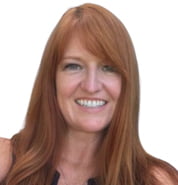This month I want to take some time out to go over from a linear perspective, why the Outer Banks market is still experiencing some challenges. Below you’ll find a snapshot review from 2005 in three year increments to show how things have transitioned during this particular market cycle.
Year Units sold Average Price sold
2005 2104 $555,973
2008 1045 $427,718
2011 1333 $370,569
2014 1611 $370,351
2017 1995 $385,774
2019 1959 $401,186
Here’s what this tells us:
- 2005 was considered the peak
- 2008 was the beginning of the decline, starting with a 50% drop in units sold
- 2011 – 2014 was the lowest point for price, showing a 32% drop for the overall OBX market (some areas it was a higher percentage)
- Units sold has made an incredible rebound from the peak in 2005 with only a 7% difference in the number of homes sold from then to 2019
- Average price has only recovered by 5% since 2011
- Average price is still 28% less than the peak in 2005
- In 8 years, the pricing has changed by only 5% for the entire market
You can see here that while we are selling almost as many homes as before, the appreciation has been extremely slow. Thus, expecting the price of your home to change drastically in a short period of time on the Outer Banks has proven to be non-existent.
This can also explain why if you purchased a home on the Outer Banks between 2009 and 2017, there may not be much, if any change to the market value of your home. This is more amplified on the Northern Beaches (Corolla, Duck, 4 Wheel Area) as those pockets of our market are still experiencing an excess of 14 months of inventory.
Without strategic timing, real estate still remains a long-term investment for maximum return. If you have been thinking about selling your home, consider the following: If this cycle mimics the last century of recorded history, we are right about year 11 of a 20 year cycle. Based on that, we should start to see prices really making changes around 2023 – 2025.
Keep in mind though, buyers’ demands have changed. They no longer want to put in sweat equity, they want homes move-in ready with updates already done. If you want to wait out the market for the next up cycle, now is the time to start planning any maintenance and upgrades to make your home more valuable and saleable. If you would like a list of where to best spend your remodeling dollars, send me an email and I will get that to you. Construction costs have changed drastically since I first began my career in 1997. Most projects have nearly doubled in cost. It is prudent to get a trained professional to give you some guidance on how to get the most out of your home projects.




